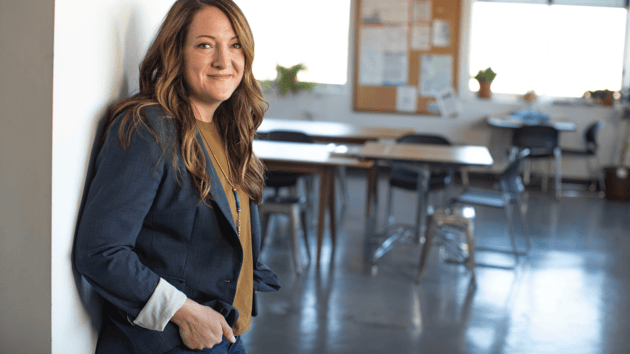How Teacher Coaching Can Transform Your School
Learn how teacher coaching can transform your school — from teachers’ instructional skills to student learning.
Too many school districts today follow a compliance-based model of teacher feedback through evaluation. If you work in a district, you’re almost certainly familiar with how it goes:
- An administrator goes into classrooms once or twice a year.
- They score the lesson they see on the complete rubric.
- They email or log the scores into a system.
- They move on to the next evaluation.
It’s unfortunately rare that teachers who are observed are given feedback that is targeted enough to act on.
When new teachers are given a long list of things they need to improve, it’s easy to get overwhelmed and know where to start. And it’s easy for veteran teachers to view these interactions as mere “compliance” — something to be tolerated rather than something that’s a tool for growth.
It’s not hard to understand why this outdated process doesn’t lead to positive impacts on classroom outcomes.
The message is clear: teachers don’t need to be evaluated; they need to be developed and coached.
So let’s discuss how teacher coaching can transform your school.
At SchoolMint, while we are process-agnostic, many of our most successful SchoolMint Grow partners ascribe to the instructional coaching model laid out in two seminal books by author and educator Paul Bambrick: Leverage Leadership and Get Better Faster.
There are three main areas to Bambrick’s teacher coaching philosophy: going granular with teaching by breaking it down into discrete skills, coaching a teacher through effective practice, and making the most of observations by increasing the frequency of feedback.
- Learn more in Get Better Faster: What is It, and How Does It Work?
Let’s take a look at each of these areas in depth.
Going Granular
Just like the construction of a new school building, the building up of a new teacher requires a viewpoint that looks beyond the finished product of a polished, effective educator.
It requires getting down into the nitty-gritty of what’s involved in actually learning to teach.
When a new school building is being built, you can’t simply look forward to the completed image of the building in your mind without going into granular detail: where each beam will be placed or where each nail will go during the process.
The same is true for creating effective new teachers!

Our approach requires looking at the process of new teacher learning at a granular level. You have to start with the beams.
As frustratingly slow as it might be at first, starting at the foundation is what gives a person (or a building) true lasting strength.
When coaching a new teacher, the key is to break any suggested changes or recommendations down into action steps. Action steps should be bite-sized and high-leverage. What does this mean?
- They should be bite-sized so the teacher can master the task in a week.
- They should be high-leverage, meaning it is the single most important thing the teacher can do to improve classroom outcomes during the intervening period.
Such granularity applies to teacher feedback, too.
Instead of giving sweeping feedback that attempts to cover a broad range of areas in one or two yearly observation sessions, teacher coaches should instead provide specific feedback on the skills teachers most need to work on at any given time, often in small chunks of one or two suggestions.
Plan, Practice, Follow Up, Repeat
The second step in our process involves adherence to the following mantra: plan, practice, follow up, repeat.
What this means in an educational context is simple: just like any other skill, practice makes perfect when it comes to learning to teach.
Of course, as with anything else, the more effectively we practice, the better we perform. In Practice Perfect, Doug Lemov details how this approach unlocks the transformative power of practice.
This is why it becomes necessary to first carefully plan before we practice. With teaching, this means we must develop an effective teaching method — or “script” — before we bring it live into the classroom.
This planning also extends to our observations themselves.
As educators, it’s important we plan accordingly by calendaring out our observations, debrief meetings, and weekly data meetings — all of which contribute to getting teachers teaching better, faster.
- During the first step, the classroom observation, the principal is looking for a high-leverage action step that will have the biggest impact to improve the teacher’s performance in the next week.
- Following that, we have a debrief meeting, where the principal and teacher meet. The principal leads a coaching conversation designed to help the teacher identify and understand the gap in their teaching, and they set a high-leverage action step for growth.
- Finally, at the end of each week of observation, you have the weekly data meeting, where the principal and teacher meet to look at student data to understand student mastery of objectives, and, where necessary, figure out a reteach plan.
All of these steps are then repeated weekly or bi-weekly, with gradual but continual progress seen week by week.

Make Feedback More Frequent
We can all appreciate the role experienced doctors play in guiding residents toward accelerated development through frequent, direct feedback during their learning process with patients. As educators, why can’t we apply these same principles to teaching?
At SchoolMint, we encourage the adoption of this model, believing that giving more feedback more frequently will serve to accelerate the development of new teachers in a way that one-off yearly observation and feedback simply can’t match.
This isn’t just what we believe; the research backs this up. Studies by John Ross have shown that student achievement and teacher efficacy increase when the frequency of teacher coaching goes up.
Perhaps the most important part of making feedback more frequent involves something so commonly overlooked: the intellectual lives of the students.
When we increase feedback, we can intervene more quickly when we see something going wrong in the classroom. This not only helps teachers’ learning but also the learning of students.
By inserting frequent, effective feedback into teaching in partnership with teachers, you leave the instructor with valuable tools they can implement long after their principal or coach has left the room.
Summing It Up
By applying these key ideas into your observation programs, you can begin with these little steps, often starting with something as small as a sticky note.
And slowly — but surely — you’ll begin to see lasting transformation in the ways your teachers teach and your students learn.
Share this
You May Also Like
These Related Stories

What is Instructional Coaching for Teachers?

I’ve Got Classroom Observation Software — How Do I Find Time for It?




